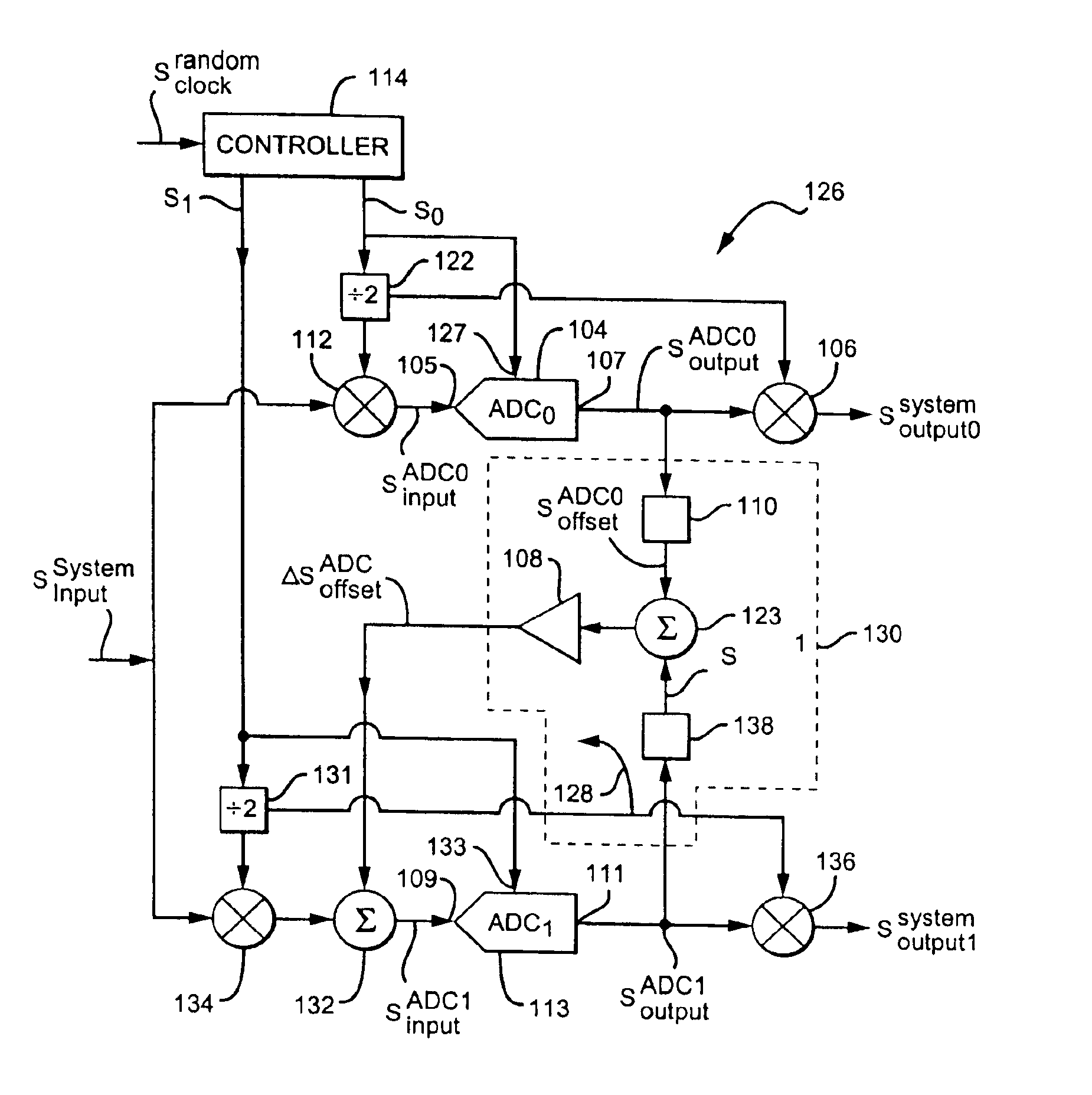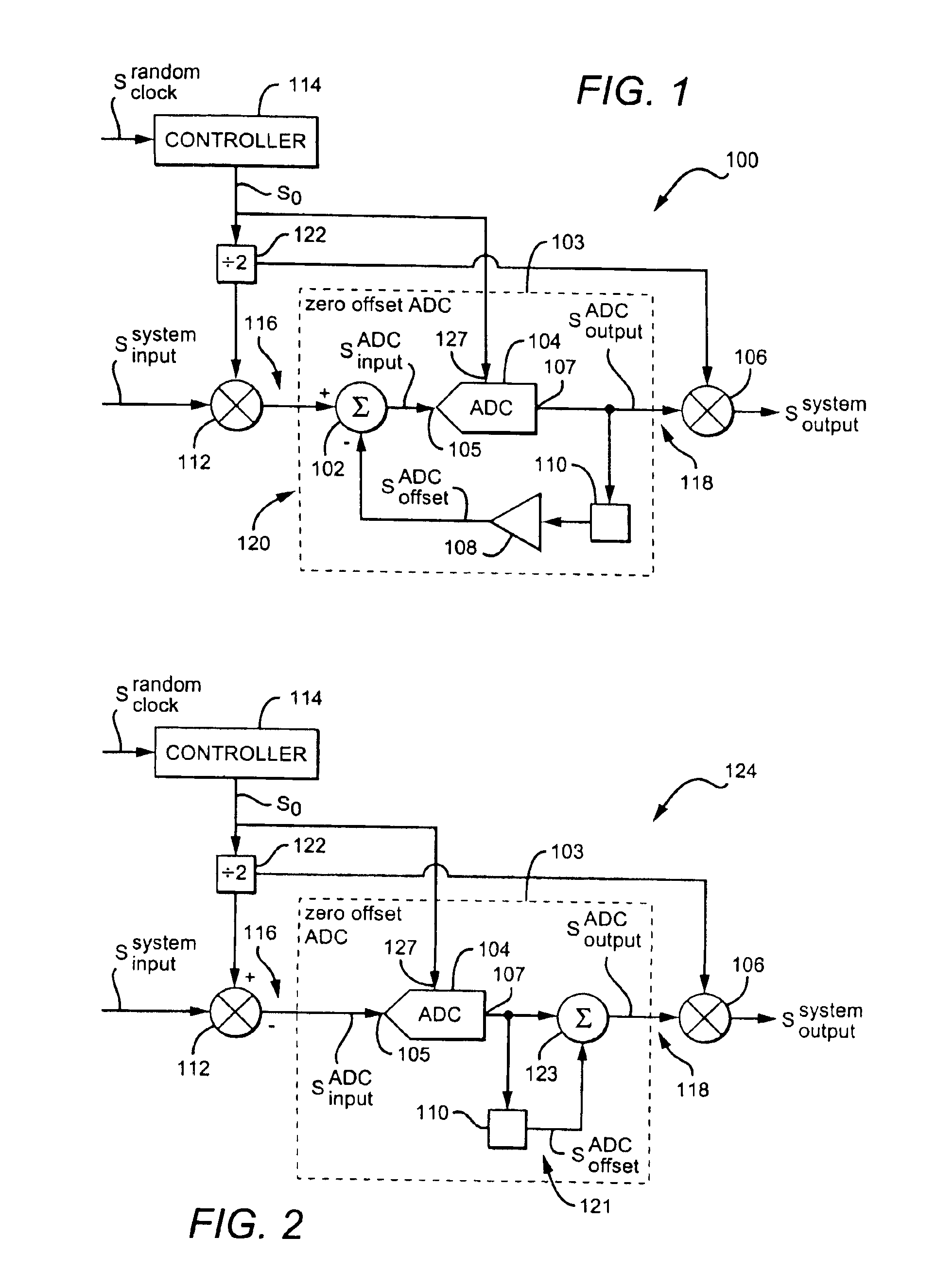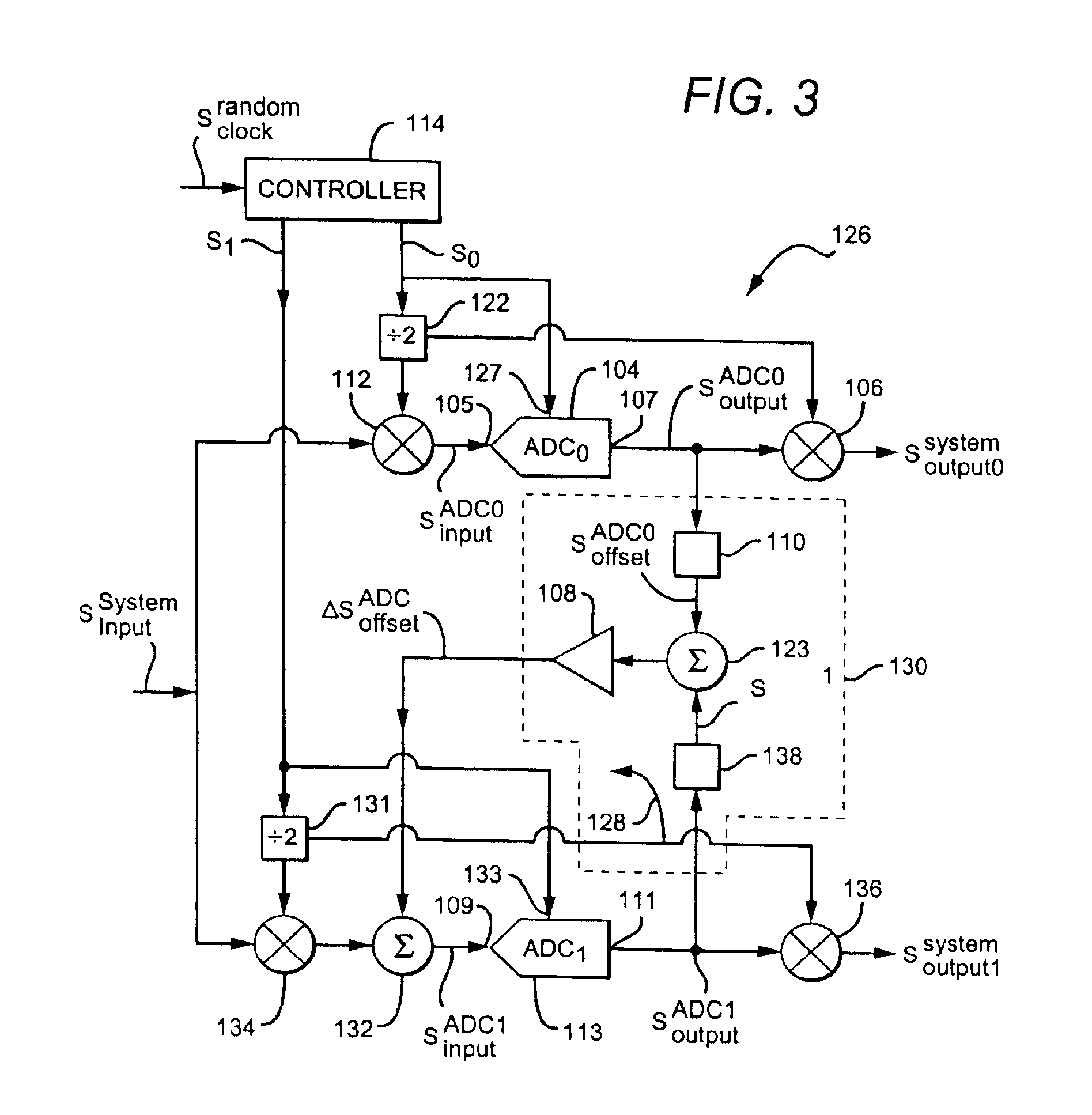Signal conditioning system with adjustable gain and offset mismatches
a signal conditioning and gain adjustment technology, applied in the field of electronic circuits, can solve problems such as inability to correct for mismatches, significant spurious tones or frequency components at the system output, and affect the signal-to-noise and distortion (sinad) ratio,
- Summary
- Abstract
- Description
- Claims
- Application Information
AI Technical Summary
Benefits of technology
Problems solved by technology
Method used
Image
Examples
Embodiment Construction
[0040]FIGS. 1-4 and 6-8 illustrate different embodiments of signal conditioning systems in accordance with the present invention. It should be noted that the signal conditioning systems can include, for example, a differential amplifier, an operational amplifier, an analog-to-digital converter (ADC), or a digital to analog converter among others. In the embodiments shown in the following figures, however, the signal conditioning systems include analog-to-digital converters to exemplify the features of the invention.
[0041]FIG. 1 illustrates a signal conditioning system 100 which uses analog techniques to adjust or correct an offset signal. The term “analog techniques” refers to the coupling of an ADC output to an ADC input through a feedback loop in which where the offset signal is subtracted from an analog input signal to condition a digital output signal. It should be noted, however, that the offset signal is subtracted from the analog input signal for simplicity and ease of discus...
PUM
 Login to View More
Login to View More Abstract
Description
Claims
Application Information
 Login to View More
Login to View More - R&D
- Intellectual Property
- Life Sciences
- Materials
- Tech Scout
- Unparalleled Data Quality
- Higher Quality Content
- 60% Fewer Hallucinations
Browse by: Latest US Patents, China's latest patents, Technical Efficacy Thesaurus, Application Domain, Technology Topic, Popular Technical Reports.
© 2025 PatSnap. All rights reserved.Legal|Privacy policy|Modern Slavery Act Transparency Statement|Sitemap|About US| Contact US: help@patsnap.com



